BlogSpot

January 28, 2016
Real Friends
Kanye West recently released a record titled, “Real Friends.” The song provides an introspective look at West’s relationships, which in turn has prompted me to do the same.
As I continue to age, I increasingly see the value in having a strong cohort of friends with whom you can share time, advice, and experiences. It is not enough however to just have a group of friends. It is important for me to be in an environment that promotes growth and support. Surrounding myself with friends who are inspiring and striving for their own success is one of the many ways I create a healthy environment.
 As many of my friends are preparing their post-graduation plans, it can be a time of high stress and relative unclarity. This is where I find value in the companionship provided by friends. With the diversity of experiences throughout my friends, I have seen their creativity fruition into ideas on how to follow their passions through the pursuit of a profession or continued education. The creativity extends past pursuing passions. Our discussions include planning how we will contribute to each other’s successes, providing not just an emotional support but also a support network for our futures.
As many of my friends are preparing their post-graduation plans, it can be a time of high stress and relative unclarity. This is where I find value in the companionship provided by friends. With the diversity of experiences throughout my friends, I have seen their creativity fruition into ideas on how to follow their passions through the pursuit of a profession or continued education. The creativity extends past pursuing passions. Our discussions include planning how we will contribute to each other’s successes, providing not just an emotional support but also a support network for our futures.
These networks have been an integral part of my success since high school. As one of very few students of color at the private school I graduated from, we shared some common experiences in our environment. These experiences created a camaraderie among us that lasts even to this day. Our accomplishments are shared and our shortcomings are uplifted, and for this I am appreciative. 
I have long found great value in being deliberate in the expression of love and appreciation for those in my life. With that being said, a special thank to all of my friends from high school, as well as those who I have had the great pleasure of growing with during my time here at NC State. Check out @myhealthimpact and www.myhealthimpactnetwork.org for this and other information of #health, #culture, #tech and #STEM.
Figure 1: http://www.christcitychurch.ie/life-groups-what-are-they/
Figure 2: http://epasda.org/events/were-in-this-together/
Share


December 09, 2015
Decisions, Decisions: Sexual Health Education or Mental Health
Public Health Education is such a broad field of study, with a vast selection of areas to choose from. There’s tobacco, global health, epidemiology, climate change and a host of others. Out of these various topics, I find myself drawn to a few that seem to peak my interest: Sexual/Reproductive Health education, Domestic Violence, and Suicide/Depression. I haven’t decided exactly which area I want to focus on after graduation, but I have tried to educate myself on these topics.
My interest in Sexual Health came about in my Human Sexuality class that I took my first semester in the Health Education department. At first I only took it because I just need another health elective to take and didn’t think anything of it. We discussed so many things in that short amount of time and I was hooked ever since. My professor has been very influential in my decision to teach sexual health education.

On the weekend of November 21st, I had the privilege to volunteer at the 10th Annual Teen Talk Lock-In for the Wake County Health Department. It was an all night, interactive sexual health education workshop for teens. The key areas of focus were attitude & mindset, healthy lifestyles, and access to resources. They had 5 workshops on building positive and healthy relationships, coping and looking forward to positive outcomes, what love is and how to communicate your love to others, understanding your body inside and out, respecting different lifestyles and identities, and also the importance of Sexual Health Education and HIV/STI testing. I was able to go from session to session with the kids and observe the different speakers, my professor being among them. Seeing them interact with this age group, 12 to 17 year olds, further convinced me that I need to do sexual health education. I would like to further help in the fight to make sex a normal thing to talk about in everyday conversation.
October was Domestic Violence Awareness Month, and I was appointed Chair of the 2nd Annual Women’s Empowerment Program for our Department of Health Education at North Carolina Central University. The purpose of this year’s program was to increase awareness of Intimate Partner Violence (IPV) and its correlation to HIV incidence among college women, through education, empowerment, and condom usage. The goal of the program was to empower young college women to RESPECT themselves in order to PROTECT themselves from HIV. Our keynote speaker and founder of Healing after Domestic Violence (HAD). Her story was so powerful, there wasn’t a dry eye in the house. The program targeted 18 to 24 females on campus. Being in the city of Durham, the young ladies on campus are bound to meet and maybe even start relationships with boys on campus as well as from the surrounding areas. For many of these girls, it is their first time away from home, without direct supervision, and they are likely to take advantage of that. Unfortunately for them, not everyone they deal with will have their best intentions at heart. What can start out as a sweet and loving relationship, can go really south, really fast. The program highlighted signs of domestic violence and where to seek help. There were also booths set up, by myself and my fellow Public Health Associates, showcasing different Social Marketing campaigns focused on Intimate Partner Violence. Resources that are available on campus also had booths set up.

In my research class, we had to choose a health topic to do research on. Normally, I would chose HIV/AIDS, but this time I did suicide and depression, focusing on African American women. I was very surprised that it was hard to find almost any articles on my target population. I’m talking about hours and hours of searching for an article even remotely focusing on depression or suicide in African American women. It was alarming to me, and made me think why no one had decided to do any research on this underserved population, in this regard. As a part of the aforementioned population, I personally know that depression is real in the African American community. There is also a stigma attached to it. I’ve heard people say “Black people don’t get depressed. That’s only crazy white people. Just get over it.” What people don’t realize is that downplaying anyone’s feelings of depression is not helping them at all, and possibly even worsening it, leading them to suicide. If I were to choose this as my final area of focus, I would definitely want to go into research regarding African American women and teenagers.
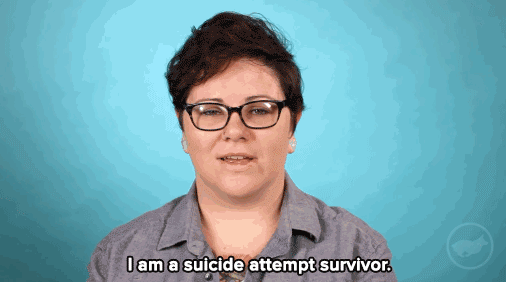
I wasn’t sure how Public Health Education was going to work out for me when I first transferred to the department, but I soon found my place. I chose to focus on these topics for various reasons. I know people who don’t know how some STIs are transmitted and don’t know how to use condoms properly. I know others who have been in abusive relationships, not even realizing that they were in one, and not want help trying to leave the person. That hurt me, that as their friend, they didn’t want me trying to help them. I, myself, struggle with my own depression, and dealing with it. There is always someone who needs public health education and resources, and as a future health educator, I am working hard so that one day I can help others with their problems.
Follow @myhealthimpact on health and tech stories impacts #youngppl. #publichealth #mentalhealth #sexualhealth
Share

December 03, 2015
The Evolution of Sneaker Design Technology pt1
Over the years I have owned just about every kind of sneaker imaginable. Ranging in price from $35 to over $200, if it was hot and my mom could afford it, they were on my feet. From classic Chuck Taylors to Italian owned Filas and even the GOAT Jordans that still outsell just about every other sneaker on the market today. I’ve been in love with footwear for a very long time. From fancy colorways to exclusive collabs, I never thought about the evolution of sneakers until a few years ago when I developed shin splints during a routine workout. It was at this very time that I thought to myself, what percentage of this pain was caused by the shoes on my feet? As a trained computer scientist, I did what most technologists would do call the family podiatrist open up Google search and fire off a few queries. What I got back was pretty interesting:
- Could Your Shoes Be Giving You Shin Splints?
- Worst Shoes for Your Foot Health
- How Shoes Cause Flat Feet and Overpronation
- How Does Your Arch Height Affect Your Shoe Choice and Injury Risk
Not only did my search expose certain brands but styles of shoes too -- ultra high heels, flip flops, and ballet shoes were all known to cause foot problems. I was pretty alarmed at the findings and wanted to know if anyone was looking into solving these types of foot problems through the next generation of footwear design.
Both Adidas and Nike had already invested a good bit of money into their Research and Development division to solve unique problems. Adidas was working on FutureCraft 3D (via YouTube), a unique 3D-printed running shoe midsole which can be tailored to the cushioning needs of an individual’s foot. While Nike took on accessibility by literally reinventing the zipper on performance sneakers. They developed Flyease technology, a system that solves a problem for amputees, stroke victims, and people with cerebral palsy. By using a subtle zipper that snakes around the heel, they were able to let you peel open and close your shoe with one hand.

Neither of these two technologies are widespread yet but I am excited to the see impact foot health has on shoe manufacturers moving forward. With 3D printing, more durable and breathable materials and a conscious customer, someday we’ll live in a world where foot problems are alleviated not created by the shoes we throw on in the morning.
Tweet @myhealthimpact to let us know what you think and tune in for the latest and greatest in #tech, #STEM, #wearables and #health focused blogs!
Share

November 19, 2015
Mental Health Among My College Peers
I wish that individuals suffering from mental health issues could feel the embrace of support on a national scale. I think about the utilization of pink to express the support of breast cancer and seeing it on television, on football fields, and on college campuses. I think of the hope that comes with such support, and I long for something similar in regards to mental illness. The American Psychological Association reported that 44% of the patients who visited college counseling services “had severe psychological problems.” This number, however high, does not begin to tell the full story on mental health, especially in the college aged demographic. The stigma surrounding mental health issues is often silencing, which is why it must be spoken about deliberately. In the last year, NC State has lost two students to on-campus suicides, and even more outside of campus. This is to say the least, both concerning and devastating.
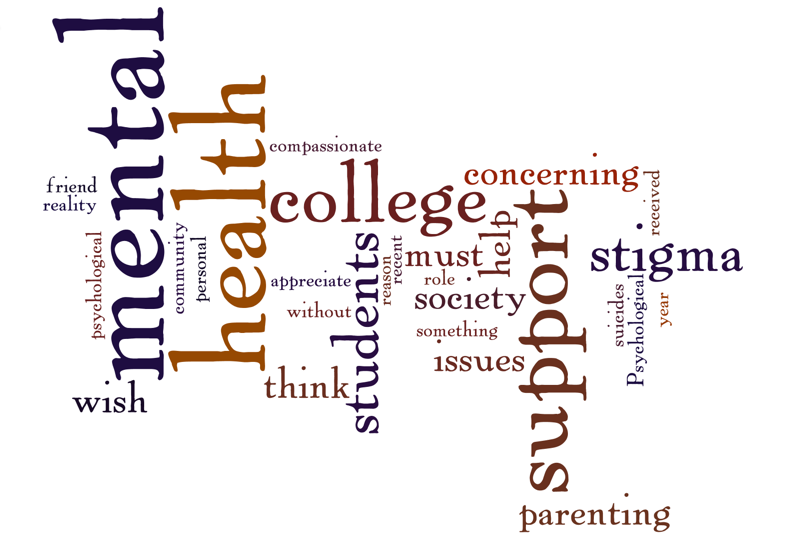
I am very thankful of my parents for raising me to be a compassionate friend and an attentive listener. They modeled for me to listen without judging and as a result I believe many of my friends have felt comfortable sharing openly with me their stress and worries. Some may say I am a bit hypersensitive to the mental health of others, I don't mind that personality trait. In a recent conversation with my mother who has practiced as a psychotherapist for over 20 years, she reminded me that one of the biggest barriers to young adults seeking help for their mental health is the role that stigma plays in our society. The reality of stigma is that it perpetuates isolation, shame, and hopelessness. It is understandable that individuals with emotional distress would be hesitant to ask for help in this environment.
As a society, we are generally unaware of the level of struggle that college students face with regard to mental health. There are students who walk in the dark every day without feeling supported and it is up to us as friends, faculty, acquaintances, classmates, and a community to help break the silence, increase awareness and show more compassion to those suffering from mental illness. We have both an individual and collective responsibility to support each other, this is the only way out of the stigma of mental illness.
Follow @myhealthimpact for real talk on often hard topics.
#mentalhealth #collegestudents #stigma #supportsystems
Share
November 12, 2015
Two Undergraduate Experiences at AHPA 2015: 2 Brothers, 2 Friends
Marcel Souffrant
Attending the American Public Health Association Annual Meeting (APHA 2015) was my first experience in presenting research in a professional conference setting. This for me was the highlight of my three days in Chicago. Having the opportunity listen, watch, and take part in vivid discussions concerning public health from a variety of perspectives was enlightening but also fueling.
The APHA conference had 13,000 participants, which can easily create an overwhelming environment. The opportunities presented due to this plethora of people however was unlike any other. I was able to have conversations with physicians, graduate students, professors, and healthcare professionals about public health and each perspective was unique. This conference was a great example of how multidimensional the realm of public health can be. As a prospective medical school student, I found the lack of presence of medical school representatives surprising. Almost all of the booths representing schools were focused on their respective programs of public health. I assumed that there would be a larger representation of medically focused initiatives for students like myself. Saying so, after many conversations with different representatives, I became aware of the close interaction that can take place when medical students continue to show interest in public health. There are programs across the country that have opportunities for students to continue to work and conduct research pertaining to public health, showing the possible continuation of our work.
Attending this conference as one of the very few undergraduate students presenting research was an experience that I will keep with me forever. I really enjoyed walking around the conference with my good friend Geard, who also presented his research. We conversed with people from all different types of backgrounds. In almost all of these interactions we received praise and encouragement for both having our work accepted and for our career aspirations. It was both empowering and motivating to receive praise from complete strangers who showed genuine interest in our work, reminding me of the importance of positive reinforcement.

Geard Fossett
The American Public Health Association Annual Meeting 2015 was held in Chicago in early November. While this conference has been going on for a variety of years it was the first time that I attended. My trip to the APHA conference was full of a variety of firsts for me. It was the first time I presented any of my work at a national conference of over thirteen thousand public health professionals, it was the first time I was able to meet and network with a variety of individuals in different areas of public health, and it was the first time where I was able to speak to job recruiters for many different companies and faculty members from a variety of different universities.
As a current senior looking to apply to both graduate schools for public health and future employment opportunities, I felt that the conference was a great way to speak to a diverse group of individuals working in the realm of public health. I found that a lot of individuals with whom I had in-depth conversations were more than willing to help me by supporting my career goals within public health. Through attending various seminars, and talking to individuals I really felt that I was able to make a variety of connections and hopefully take advantage of some of the opportunities I was presented with.
Overall I think my favorite part of the conference was both presenting my poster in the ethics poster section as well getting the opportunity to view others presenting their research. Those presenting their research ranged from current undergraduate students to people with graduate degrees. This was truly a great opportunity to not only ask questions about their research but also to get an insider’s view as to how different research is after the undergraduate level.
I thoroughly enjoyed attending the conference with my close friend Marcel Souffrant. Although we attend different schools for undergrad we had a rare opportunity to attend this conference together. It was truly a privilege being able to navigate my first professional conference with a true friend.
Follow @myhealthimpact #APHA15 #students #publichealth #Healthcare
Share

October 28, 2015
Biometric Sensing: Monitoring a Developer’s Health
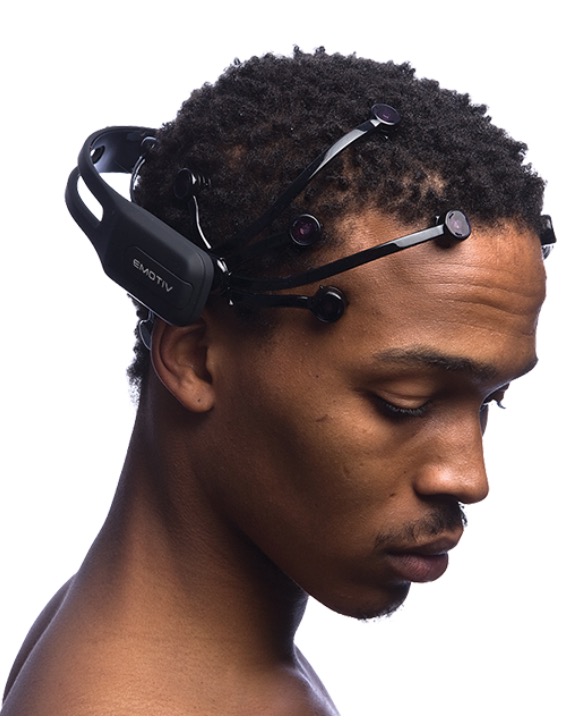
One of my recent projects incorporates to how to use technology to monitor stress and engagement during activities. A few of the tools used include the Emotiv EPOC+ EEG and Shimmer GSR Bracelet. These are two of the cool new gadgets that I will use to monitor cognitive load in programming environments. We can identify changes in the types of cognitive loads described utilizing techniques that measure brain activity, eye movement, and skin conductance. Mapping the changes in cognitive load during programming helps us gain a better understanding of how programming can be a representation of the applicant's knowledge.
There have been many studies that have studied the use of these tools, but not many that study the safety of software developers. Defining the usage of these tools for software developers can open up doors as to how we can monitor the well-being of developers. This is also a giant leap forward in understanding why so many developers are leaving the field of computing. Through the analysis that this tool provides we will be able to monitor the daily work of developers beyond what they can personally report.
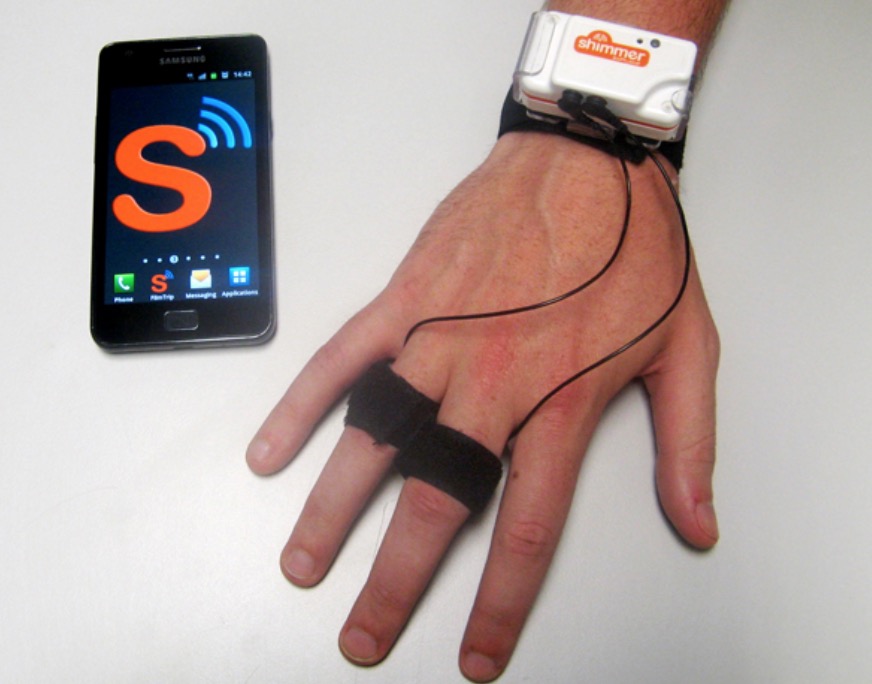
Monitoring the cognitive load, stress, and engagement of developers can help researchers expand the tools and methods used in having developers present their knowledge. These tools used in this research are a next level version of some of the tools and devices that are made commercially to the average consumer. This goes to show that the devices that are made affordable and accessible to the general consumer can be adapted to solve multiple problems.
The tools today are advancing at a remarkable rate and surpassing the expectations that any researcher would have expected. As these tools become less expensive and more portable, the door opens for more intense research opportunities.
You can find out more about my research projects on my blog: http://blog.denaeford.me.
Follow @myhealthimpact and see other posts at www.myhealthimpactnetwork.org on the #STEM + #tech + #health journey.
Share

October 22, 2015
STEAM and Sports
There has been much discussion on Baltimore Ravens offensive lineman, John Urschel. Urschel is currently in his second NFL season, but his energy is not fully invested in football. While attending and playing football at Penn State University, he earned both a bachelor’s and master’s degree in mathematics. He is currently working towards a PhD in applied mathematics and was invited to speak to NSA mathematicians about an algorithm created by him, to aid in the organization of large amounts of complex data. His published works have been widely celebrated in and outside of the mathematics community. Urschel has been one of the more prominent figures pushing the importance of STEM education in school. He has taken his position in the community to tour Baltimore and speak at local schools. Although he is currently being profiled with articles about him found in the Huffington Post, Sportsnation, and Sports Illustrated, he is not the only NFL athlete who has dedicated his time to STEAM education. Vernon Davis, the San Francisco 49ers current tight end has also been highlighted.
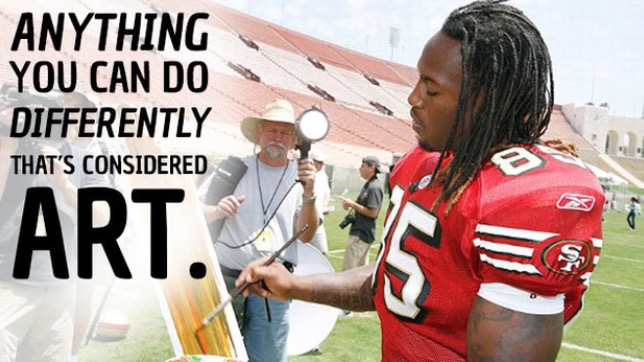 Vernon Davis grew up in inner city Washington, DC and quickly noticed his passion for visual art. He went on to change his major while at the University of Maryland from criminal justice to studio art. He now continues to pursue his passion of art through painting. He now sponsors a visual arts scholarship, promoting the arts for interested high schoolers in the San Francisco area. Davis, who was initially embarrassed by his interest in the arts while a high school student, has said that the arts have provided him with a refuge away from football life. It has also taught him the importance of self-confidence, and wants to be sure that students interested in the arts are able to follow their interests regardless of social pressures of their peers.
Vernon Davis grew up in inner city Washington, DC and quickly noticed his passion for visual art. He went on to change his major while at the University of Maryland from criminal justice to studio art. He now continues to pursue his passion of art through painting. He now sponsors a visual arts scholarship, promoting the arts for interested high schoolers in the San Francisco area. Davis, who was initially embarrassed by his interest in the arts while a high school student, has said that the arts have provided him with a refuge away from football life. It has also taught him the importance of self-confidence, and wants to be sure that students interested in the arts are able to follow their interests regardless of social pressures of their peers.
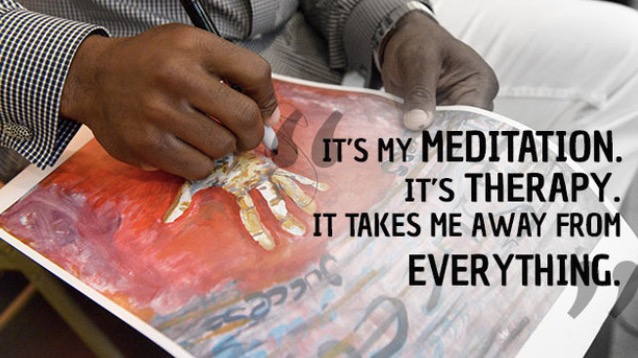 These two athletes are providing a great example of the multidimensionality of professional athletes. These men have dedicated hours upon hours for a significant portion of their lives to football, but have found an alternative outlet in STEAM (Science, Technology, Engineering, Arts, and Mathematics). It is important to note that education in these domains is pivotal for our education system. We must expose children of all communities to these realms, providing them with a variety of options to pursue. The ability of Urschel and Davis to use their platforms to advocate for STEAM is a significant stride for education, especially in the underserved communities in which they have spent their time.
These two athletes are providing a great example of the multidimensionality of professional athletes. These men have dedicated hours upon hours for a significant portion of their lives to football, but have found an alternative outlet in STEAM (Science, Technology, Engineering, Arts, and Mathematics). It is important to note that education in these domains is pivotal for our education system. We must expose children of all communities to these realms, providing them with a variety of options to pursue. The ability of Urschel and Davis to use their platforms to advocate for STEAM is a significant stride for education, especially in the underserved communities in which they have spent their time.
Share


September 28, 2015
Why aren’t you smiling
Serena Williams’ womanhood has recently been under question. If you google ‘serena williams womanhood', you without a doubt, stumble upon some articles speculating that she is a male due to her amazing body. The body shaming that has surfaced due to this fit African-American Tennis player has without a doubt come at an interesting time, at the peak of her career. It seems as though the media had to discredit her exceptional achievements and question her on every move (including gender and health).
Interestingly enough, many of the gender questions have ended as it has become public knowledge that she has a relationship with Drake, the Canadian actor and rapper. Now that she has a man on her arm, she is somehow now validated as a woman. The presence of a man, or his absence, should not be validating criteria to how feminine a woman is perceived. But because the media has “evidence” of her sexuality, there is no one questioning her womanhood any longer.
It often seems like the media just won’t let Serena live. As a woman, and one who smiles pretty often, it actually grinds my gears when I am asked why I’m not smiling. Most of the time there is some male stranger who thinks they have the authority and the privilege to tell me to smile. I assume this describes the reporter who thought it was reasonable to ask Serena during the press conference why she wasn’t smiling. Unfortunately we live in a society where some members expect you to react in a prescribed way. When you don’t, they assume something must be wrong as the reporter did during the press conference.
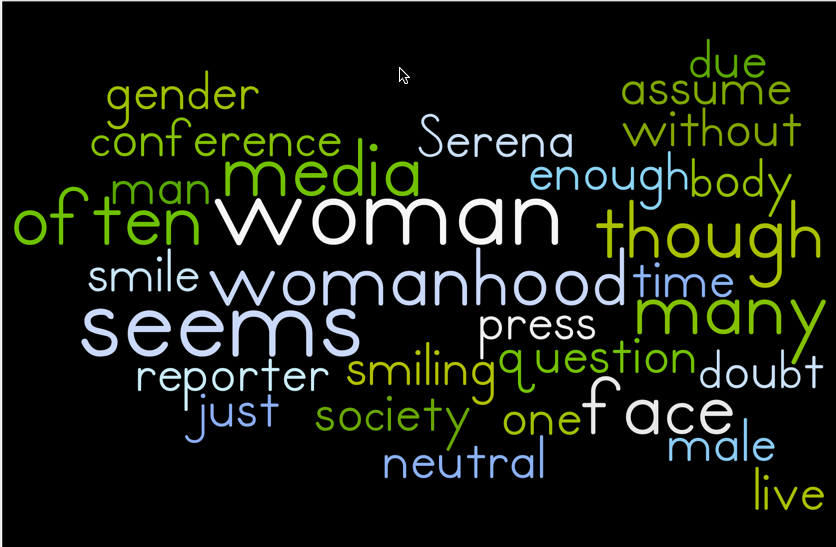
It is as though society unconsciously has a problem when females keep a neutral face. During the recent Apple Event this September, the Adobe Creative Suite presentation showed the ease of being to edit the woman’s face from neutral to a moderate smile. The model’s resting face was not good enough and had to be modified it seems. It often seems as though many women just can’t win. We can only wait for the day when our world is willing to accept that there are many definitions of a woman and all of them are SELF-DEFINED requiring no explanation.
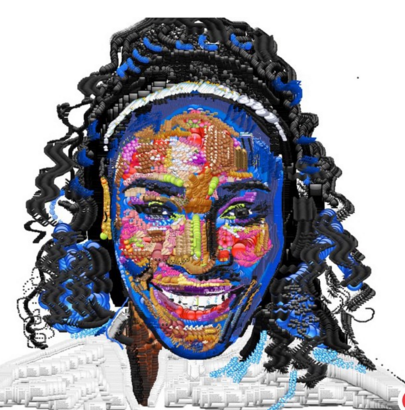
Follow @myhealthimpact on Twitter; see myHealthImpactNetwork.org (Web) and myHealthimpact (Tumblr and YouTube).
Share
Page 2 of 18 pages < 1 2 3 4 > Last ›
In Partnership with: National Science Foundation
Take Action, Get Tested: Find Your Local Testing Center Why Get Tested?





